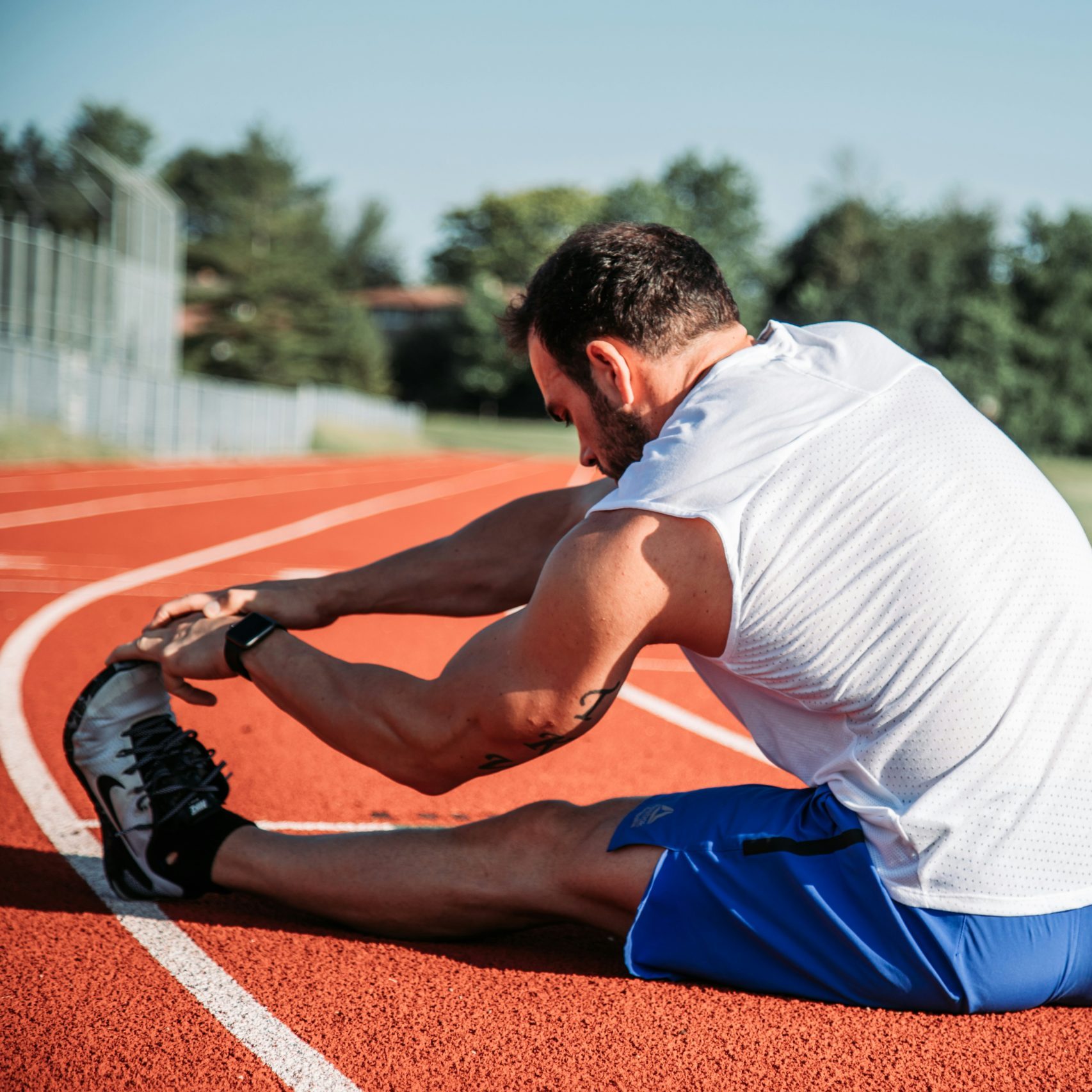Understanding and managing Muscle Cramps
By Dr. LARA MOAWAD – Sports Rehabilitation Expert
A muscle cramp is a sudden and involuntary contraction of one or more muscles that can be
very painful. It is a specific type of muscle spasm that is usually brief but can cause intense pain.
Whereas muscle soreness (courbature) also known as delayed onset muscle soreness (DOMS), occurs 24 to 48 hours after intense exercise. It results from microscopic damage to muscle fibers during workouts.
It is often accompanied by inflammation and the release of chemicals that stimulate nerve endings, causing pain and soreness.
Cramp often occurs during or after exercise, or at night (nocturnal leg cramps).
Cramps during exercise, known as exercise-associated muscle cramps (EAMC), can be caused by several
factors:
- Dehydration: loss of fluids and electrolytes through sweating during exercise can lead to dehydration, which increases the risk of muscle cramps.
- Electrolyte imbalances: low levels of electrolytes such as potassium, calcium or magnesium can disrupt muscle function.
- Muscle fatigue: overuse during prolonged or intense exercise.
- Poor conditioning: inadequate training or conditioning can make muscles more susceptible to injuries and cramps.
- Heat and humidity: exercising in hot and humid conditions can aggravate fluid and electrolyte losses through sweat, increasing the risk of cramps.
Treatment for exercise-induced muscle cramps focuses on addressing the underlying causes and providing immediate relief:
- Hydration: drink plenty of fluids before, during and after exercise. Electrolyte rich sports drinks can be beneficial during prolonged workout.
- Stretching: stretch the affected muscles GENTLY to relieve cramping and prevent further cramping.
- Massage: YES you can massage a cramped muscle softly. It can help to alleviate the tightness, can improve blood flow and help the muscle to relax.
- Rest: stop the activity and rest until the cramp resolves completely before resuming activity.

It is always important to prevent cramping by gradually increasing the intensity and duration of
your workouts to improve endurance and reduce the risk of cramps. Always listen to your body and avoid overexertion as pushing through severe muscle soreness can lead to more severe injuries.
Nocturnal leg cramps which occur during sleep can be caused by:
– Muscle fatigue: overuse of muscles during the day, particularly the calf muscles; dehydration
and mineral deficiencies can contribute to cramps.
– Poor circulation: conditions that impair blood flow to the legs such as peripheral artery disease
can increase the risk of nocturnal leg cramps.
– Nerve compression: nerve compression or pinching such as herniated disc or spinal stenosis
can lead to nocturnal cramps.
Treatment for nocturnal cramps involves a combination of lifestyle changes and self-care measures:
- Regular stretching before bedtime and throughout the day. Focus on gentle sustained stretches that target the calves.
- Hydration: ensure adequate fluid intake throughout the day especially during workout and if you live in a hot climate. Electrolyte rich drinks or food help replenish lost minerals.
- Mineral supplementation: if you have identified deficiencies in potassium, calcium or magnesium, your doctor can recommend supplements to help balance your levels.
- Warm baths: soaking in a warm bath before bedtime can relax muscles and alleviate tension in general.
- Supportive footwear: wearing supportive shoes with good arch support during the day can help prevent muscle fatigue.
if your cramps are severe and persistent despite treatment and self-care measures, consult your
doctor to assess your symptoms, rule out any underlying other medical conditions and provide further treatment options.
You may also like
ASTROPHYSICISTS UNCOVER SCIENTIFIC FACTS ABOUT THE BEIRUT EXPLOSION: Only 500 Tons of Ammonium Nitrate Detonated
In a groundbreaking scientific study published just two months after the explosion, Charles Aouad, a
Between Music and Humanity: Dr. Tony Karam, an artist linking Lebanon with the world
With an unwavering commitment to music, Dr. Tony Karam, a specialist in gynecology, reflects on the
WHAT IS STRETCHING?
Stretching is a physical activity that works on elongating muscles, tendons and ligaments to improv



